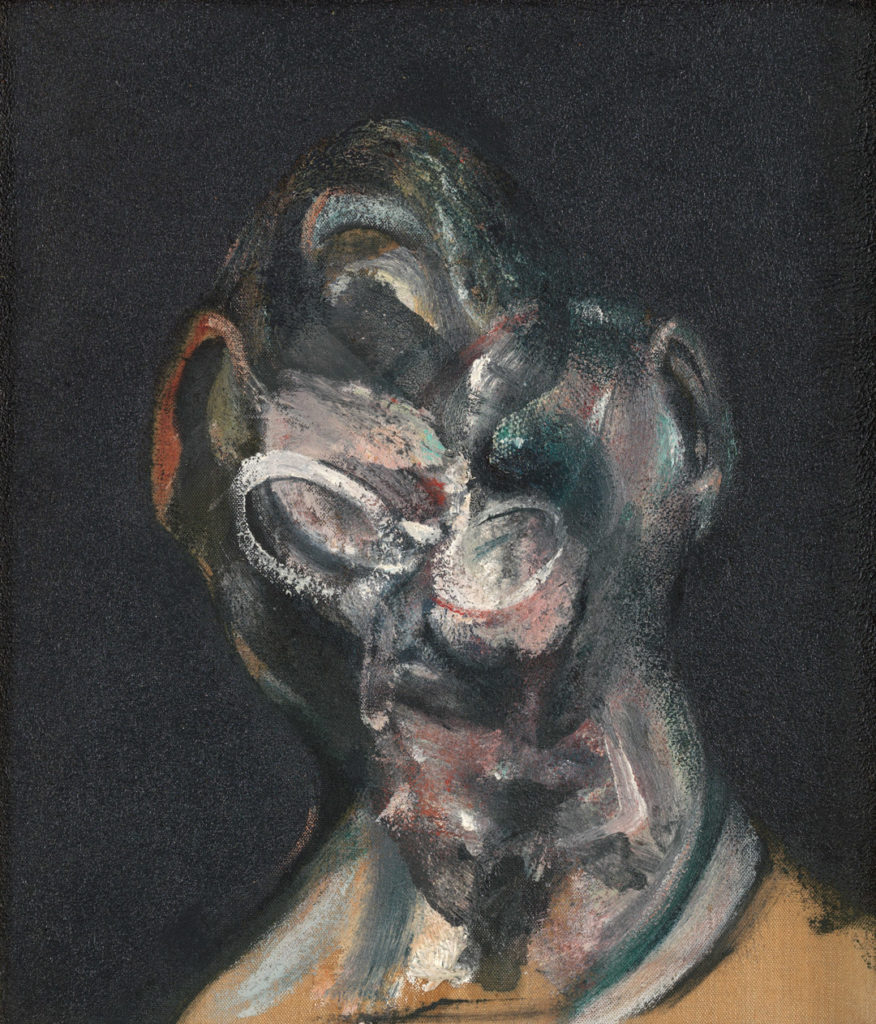Portrait of Man with Glasses I
1963 [63-08]
Francis Bacon
British, born Ireland (1909–1992), oil on canvas, 141/16 × 121/16 in., Gift of the Friday Foundation in honor of Richard E. Lang and Jane Lang Davis, 2020.14.6, © The Estate of Francis Bacon. All rights reserved. / DACS, London / ARS, New York 2021.
Portrait of a Man with Glasses I
Martin Harrison
The two paintings by Francis Bacon in the Lang Collection, Portrait of Man with Glasses I (1963) and Study for a Portrait (1967), were painted four years apart and at very different scales. At first sight, they are connected only by the fact that both ultimately entered the same collection, in 1974 and 1976, respectively. However, I shall propose that they have some salient aspects in common, and that they inform each other in significant ways.
In 1957, Allen Ginsberg was staying in Tangier, Morocco, and “spending lots of time with Paul Bowles & an excellent English painter, Francis Bacon.”1 Ginsberg wrote his father that in the Museum of Modern Art, New York, there was “a big picture” by Bacon “of a gorilla in a tuxedo under a deathly black umbrella.”2 He was referring to Painting (1946, fig. 1), which had been acquired at the instigation of Alfred Barr Jr. in 1948 and was the first of Bacon’s paintings to be purchased by a museum. I was intrigued by Ginsberg’s description of the umbrella as “deathly,” and by his suggestion that the figure it obscured was a gorilla. I had always read it as a man. Did Ginsberg somehow intuit an alternative identification? For although it is unlikely that he knew it, a contemporaneous, and in many respects similar, Bacon painting, Study for Man with Microphones, was exhibited (before Bacon destroyed it) as Gorilla with Microphones.
Even if we decide, ultimately, that the figure in Painting is a man, we should remember that for Bacon, human/simian boundaries were fluid. But Ginsberg’s observation underlines that interpreting Bacon’s paintings is not a straightforward matter, and their ambiguities continue to frustrate those of us who seek to decode their nominal subjects. After his death in 1992, Bacon, who had said he didn’t know what most of his paintings meant, was no longer able to influence the way they were read; in his lifetime, he could control interviews and refuse reproduction rights for paintings that would have appeared in situations of which he disapproved. Now, as a consequence of the turn to art theory, he has become the protean Bacon, the site of contested meanings. He is a phenomenon to be deconstructed through the contexts of various ideologies or philosophical frameworks. Simultaneously, the study of iconography has become unfashionable, and consequently there are fewer incentives to address the problematic content of Bacon’s paintings.
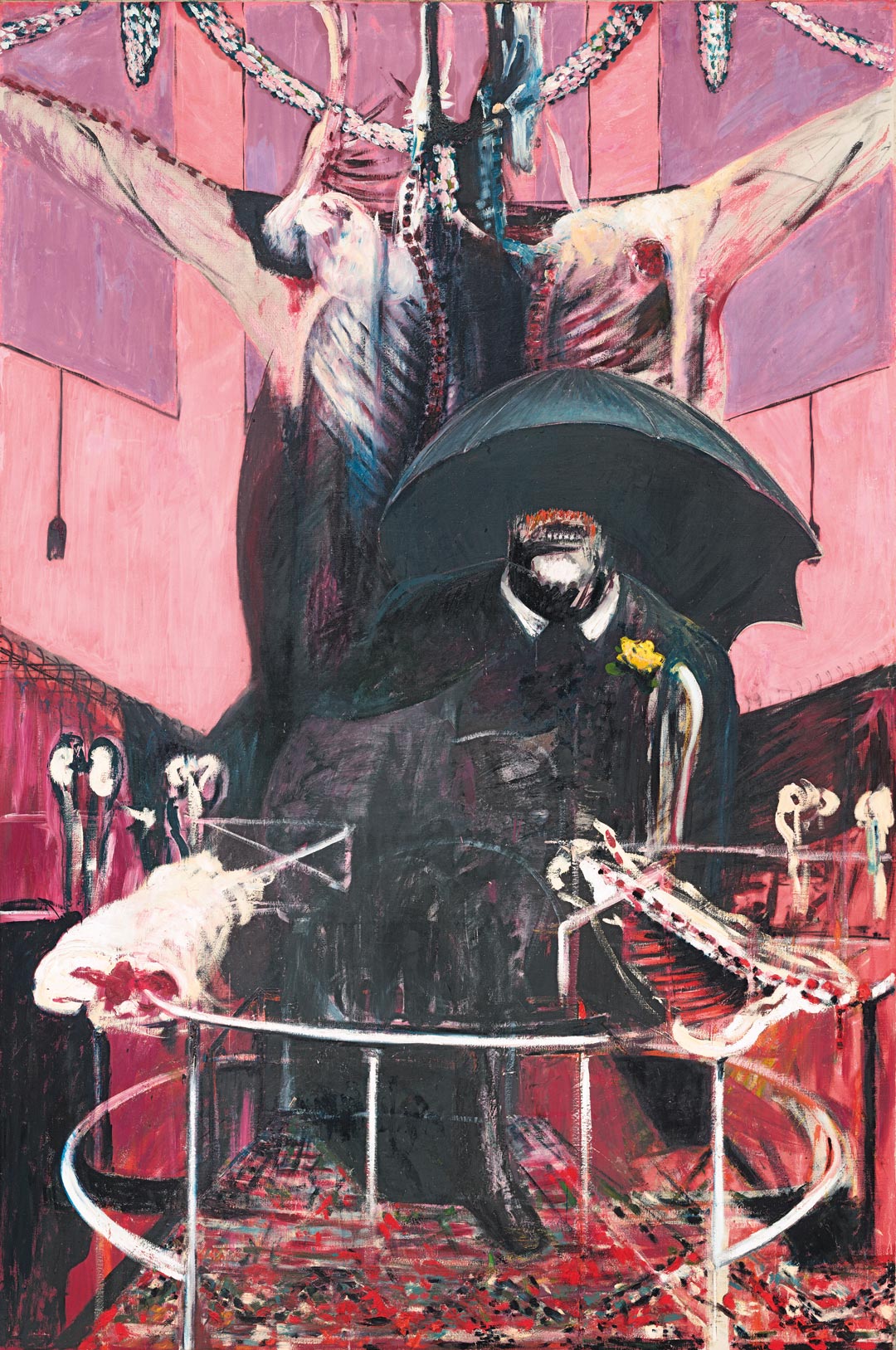
Bacon liked to think of himself as a reporter, as a painter of the real, or, as he put it, the “factual.”3 These self-characterizations need not be taken too literally. Apart from Three Studies for Figures at the Base of a Crucifixion (1944, Tate, London), which has been interpreted as his response to the horrors of the Second World War, it is difficult to align his paintings with the tumultuous events that befell the world after 1945, notwithstanding his declared aim to paint the history of Europe in his lifetime. Yet to argue, instead, that he painted the human condition, we must ask, Which humans did he have in mind? Surely his motivations to paint were technical, formal, and, most significantly, personal; they stemmed from a conviction that raw flesh equated with beauty (or sex), and life and death with violence. Rather than representing something external, he was enacting his feelings in paint on canvas through a system of personal metaphors. Significantly, he described one of his most overtly violent subjects, Three Studies for a Crucifixion (1962, Solomon R. Guggenheim Museum), as “almost nearer to a self-portrait.”4 Following the implications of Bacon’s remark involves straying toward intentionality or etiological theorizing, hence the attraction in academe of Gilles Deleuze’s antibiographical/antipsychological/antinarrative stance that Bacon was a painter of abstract sensation. Love and death are, of course, abstract nouns, but Bacon expressed his feelings in images. We need to ask why Bacon painted the images he did, to interpret the marks on the canvas; the partial interpretations essayed here try to do this, while making no rash claims to resolution.
When Bacon was still in his teens, it was Picasso’s example that had inspired him to try to become a painter; in a sense, Bacon remained in a dialogue with him throughout his life. Picasso’s influence, which was overt in the period up to 1945, resurfaced in 1962, when, in the first of a celebrated series of interviews, Bacon suggested to David Sylvester that potential stimuli in Picasso’s Surrealist Cannes/Dinard period paintings had remained “unexplored”; he believed there were new possibilities in their “organic form that relates to the human image but is a complete distortion of it.”5 Thus, Bacon reopened the dialogue, extending it in both Portrait of Man with Glasses I the following year and Study for a Portrait four years later.
As a figurative modernist, Bacon had few peers, although, intriguingly, the Lang Collection includes three of the most important among them—Willem de Kooning, Alberto Giacometti, and Philip Guston. Despite some of Bacon’s greatest paintings being held in American museums and private collections, his reputation in the United States has always been mixed, with critics from Clement Greenberg to Rosalind Krauss among the prominent detractors. For his part, Bacon has been portrayed as rigidly antipathetic to Abstract Expressionism. This is comprehensible, based as it is on repetitions of his inebriated rhetoric—a widely circulated remark being his characterization of Jackson Pollock as “the old lace-maker.”6 Yet a sober Bacon, interviewed by two Tate Gallery curators in 1983, discussed Pollock with sympathy and intelligence. He could seldom date his own paintings accurately, but he was aware that Pollock’s Blue Poles was made in 1952 and went on to demonstrate a keen interest in the artist’s partial return to figuration in 1953. Bacon increasingly simplified the grounds in his own later paintings, and the flat planes of color he employed indicate his awareness of, say, Mark Rothko and Barnett Newman, irrespective of his dismissive public statements about them: his supposed contempt for them is, therefore, a misperception based on casually uttered remarks and gossip.
That Bacon described his paintings as essentially self-portraits, as noted above, is plausible given that he almost invariably painted his psyche. Nonetheless, a minority of his paintings are not readily classifiable as self-portraits, among them the four versions of Portrait of Man with Glasses he painted around July 1963. They were originally titled simply Head 1 through Head 4; the change to more descriptive titles, which was uncharacteristic, may embody a clue to his intention with the paintings. Unfortunately, Bacon remained resolutely silent about the man’s identity, but it nonetheless seems likely that he intended these works as portraits of a quite separate individual. A strong contender is Patrick Trevor-Roper, a leading London eye surgeon. Although Bacon disliked being seen in public wearing glasses, he had worn them when he was alone in the studio since the 1930s. Trevor-Roper treated Bacon’s horizontal astigmatism, and he and Bacon saw a lot of each other at the time these paintings were made as they socialized in London’s still semi-covert gay scene. If a specific individual was intended, alternative identifications include Mahatma Gandhi and James Joyce (Bacon had photographs of both in his studio).
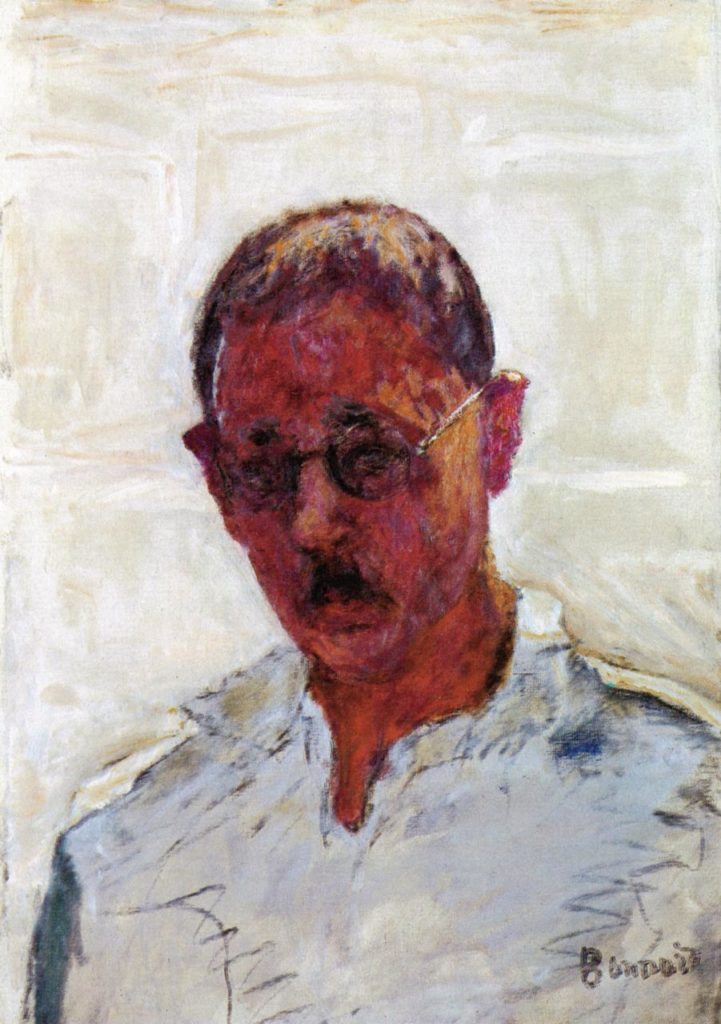
In Bacon’s oeuvre, there was a precedent for the Portrait of Man with Glasses series in the four similarly sized Head paintings made in 1961. Three of the slightly earlier suite depict Bacon’s partner, Peter Lacy, and the fourth is possibly a self-portrait. The portraits of Lacy are, by Bacon’s standards, relatively undistorted, while the deformations are far more conspicuous in the Portrait of Man with Glasses paintings. David Sylvester’s observation that Bacon’s depictions were informed by Picasso’s Portrait of Jaime Sabartés with Ruff and Cap (1939, Museu Picasso, Barcelona) is most convincing in relation to numbers III and IV in the series, in which the glasses are more exaggeratedly lopsided. Often, when Bacon painted in series, he would seek variation by making small adjustments such as these; he may also have been familiar with Picasso’s pre-Cubist renditions of Sabartés, which established a less deformed representational basis.
It should also be noted that Bacon had painted figures wearing glasses long before this, most conspicuously in Head III (1949, Private Collection). The history of art is replete with other potential exemplars, for example, Jean-Baptiste-Siméon Chardin’s Self-Portrait with Spectacles (1771, Musée du Louvre), which was the model for Bacon’s Study of Reinhard Hassert (1979, Private Collection). But arguably the most compelling comparators are the late self-portraits of Pierre Bonnard. Bacon does not directly quote any of Bonnard’s self-portraits, but his paintings share the brooding intensity of gaze that is not a characteristic normally associated with Bonnard (fig. 2). It was again David Sylvester who noted that Bacon used to praise Bonnard so highly “that I had the impression there was no twentieth century painter he preferred,”7 and the art critic Giles Auty recalled a visit to Bacon’s studio in St. Ives in late 1959 and talking with him, during a long, sunlit afternoon, mainly about Bonnard. Bacon had famously been reimagining Diego Velázquez since 1949 and Vincent van Gogh in 1957; the revisiting of Bonnard may be seen as a similar co-opting of art historical precedent as both a departure point for visual extemporizations and a vehicle for exploring his own feelings and sensations.
The numbering of the series does not constitute proof that Bacon painted them in the order he indicated; however, that the sequence commenced with Portrait of Man with Glasses I is the most logical inference. In the Lang Collection work, the painterly onslaught is at its most intense. The head is deformed, crumpled, violated. It resembles the raw flesh of the hanging carcasses that had fascinated Bacon since childhood. Unusually, the mouth—a crucial expressive site for Bacon—is almost obliterated. His color-mixing skills are employed to suggest blood or bruising, and his pressing of fabrics into the wet paint emphasizes the nonrepresentational nature of the painting—its semiabstract range of textures. The necessarily short, sweeping, and arching brushstrokes define the visceral ferocity of the assault, as though Bacon fashioned a kind of golem in two dimensions, from thick paint rather than from clay. Features are erased in dissolving, flickering paint, the structure of the head folds in under Bacon’s entropic attack. Close looking at the head, at its physical, material presence in the middle of the canvas, is essential—and richly rewarded. The area of canvas at the bottom of the frame is left raw, unpainted; this is common to all four works in the series, as is the texture of the black ground, its bituminous density, achieved by thickening with linseed oil, coagulating into a void. While the glasses in this version are fairly perfunctory—they resemble the white ellipses Bacon would add, almost arbitrarily, to heads long afterward—they were more identifiable as spectacles with frames in the second, third, and fourth portraits; only in Portrait of Man with Glasses III does Bacon show us the man’s angrily bared and skewed teeth. Portrait of Man with Glasses I has not been analyzed in any detail before, and this first essay leaves many of its mysteries intact: hopefully, the renewed attention to this compelling painting will open it up to fresh interpretations.
Author
Martin Harrison has been writing about Francis Bacon since 1999 and edited Francis Bacon: Catalogue Raisonné (2016), published by the Estate of Francis Bacon, where he is head of publishing. He coauthored the fourth volume in the series Francis Bacon Studies, Francis Bacon: Shadows (Thames and Hudson, 2021).
Notes
1 Allen Ginsberg, quoted in Michael Schumacher, ed., Family Business (London: Bloomsbury, 2001), 60.
2 Schumacher, Family Business, 60.
3 See, for example, David Sylvester, The Brutality of Fact: Interviews with Francis Bacon (London: Thames and Hudson, 1997), 56.
4 Francis Bacon, quoted in Sylvester, Brutality of Fact, 48.
5 Bacon, quoted in Sylvester, Brutality of Fact, 8.
6 Bacon, quoted in David Sylvester, Looking Back at Francis Bacon (London: Thames and Hudson, 2000), 246.
7 Sylvester, Looking Back, 87.
Explore the Collection
Sort by Chronology
Sort by Artist
Sort by Author
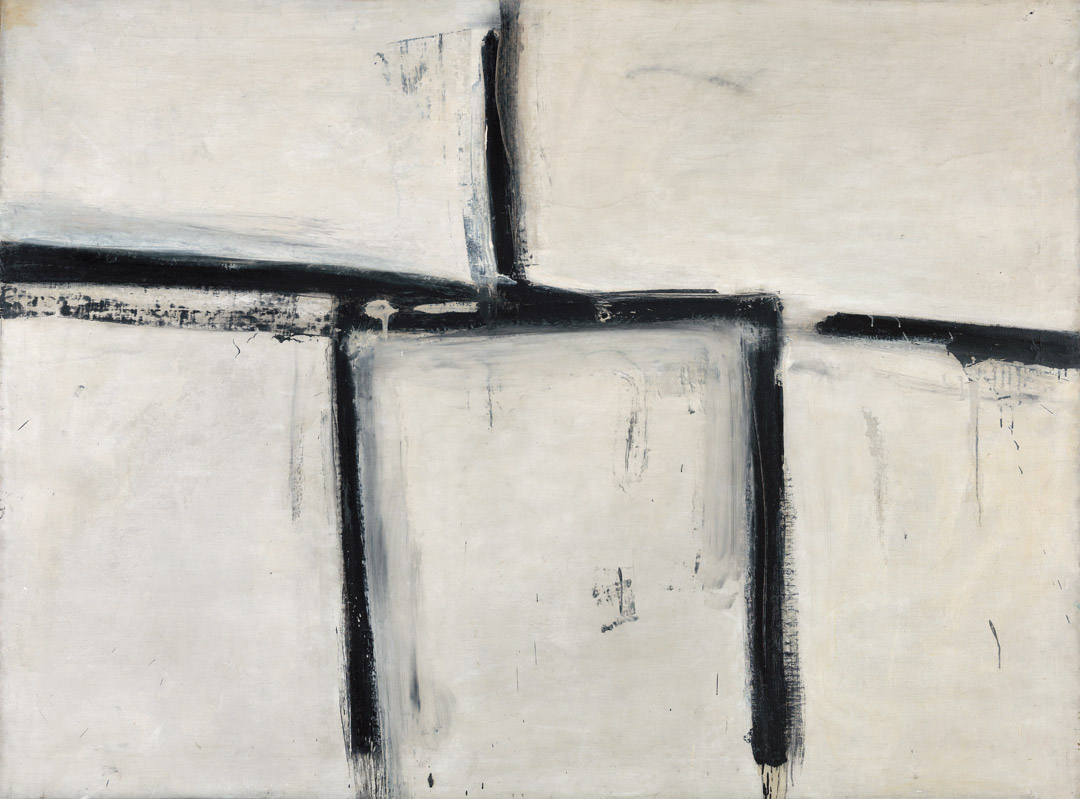
Franz Kline, Painting No. 11, 1951
Acquired November 13, 1970
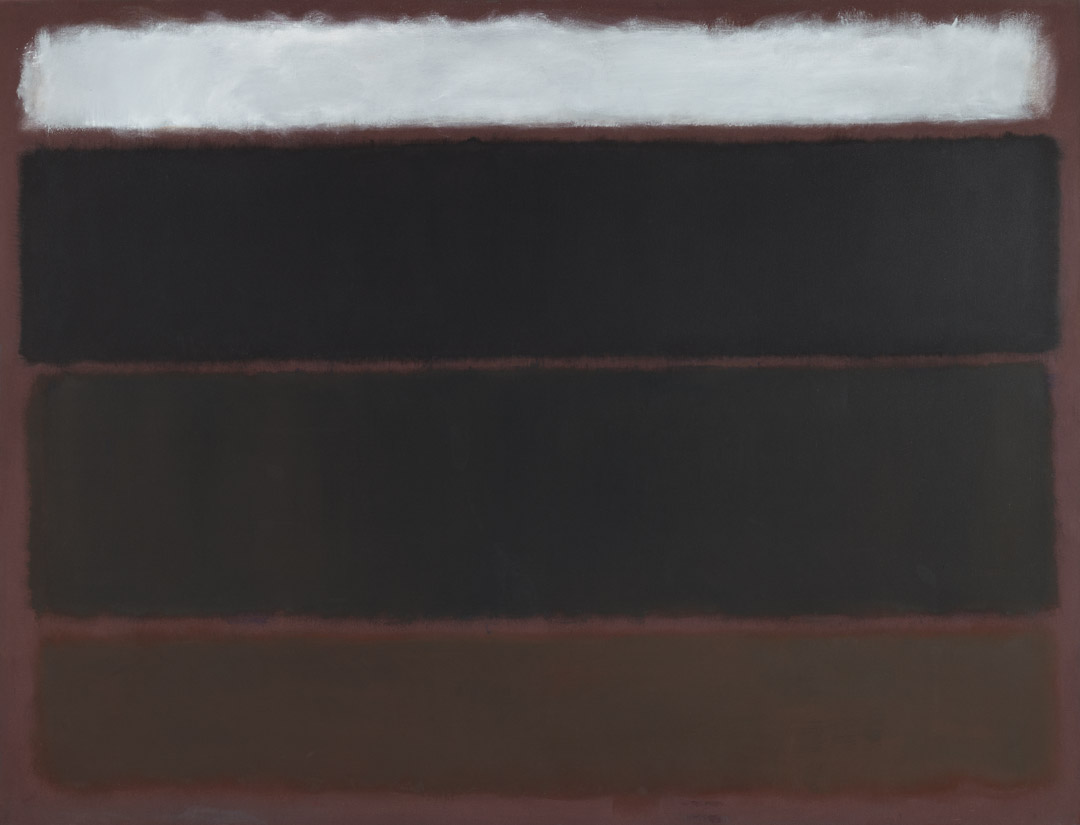
Mark Rothko, Untitled, 1963
Acquired May 18, 1972
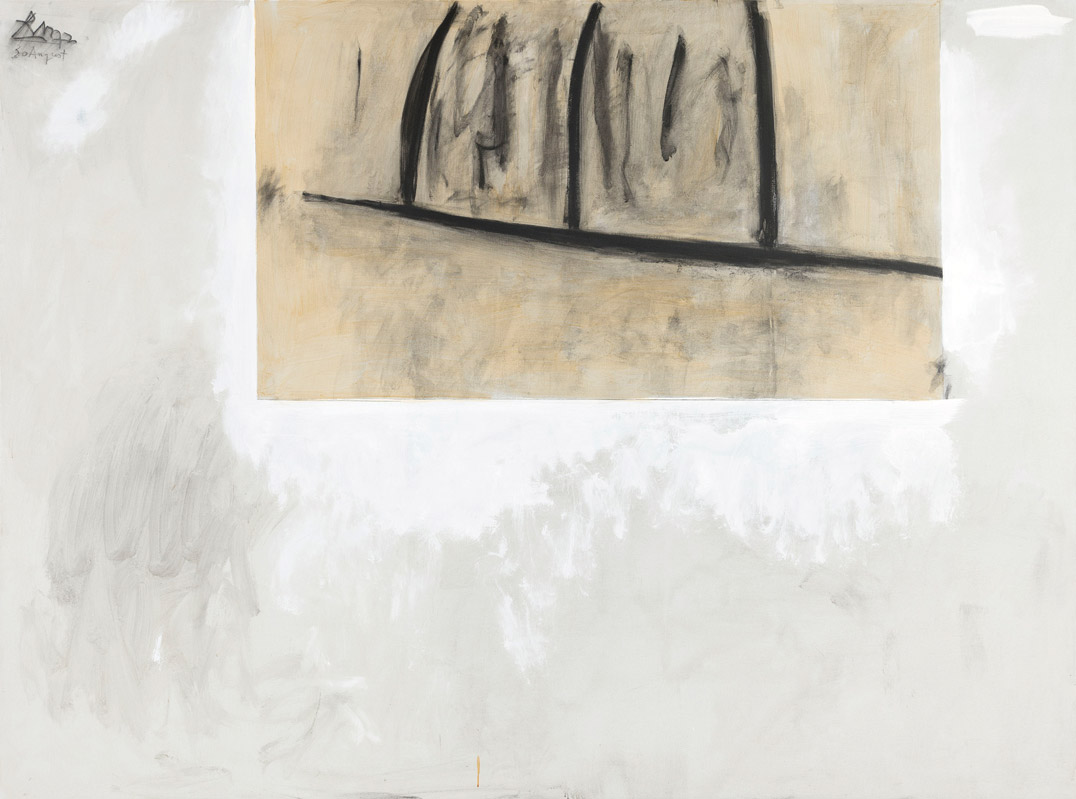
Robert Motherwell, Before the Day, 1972
Acquired October 12, 1972
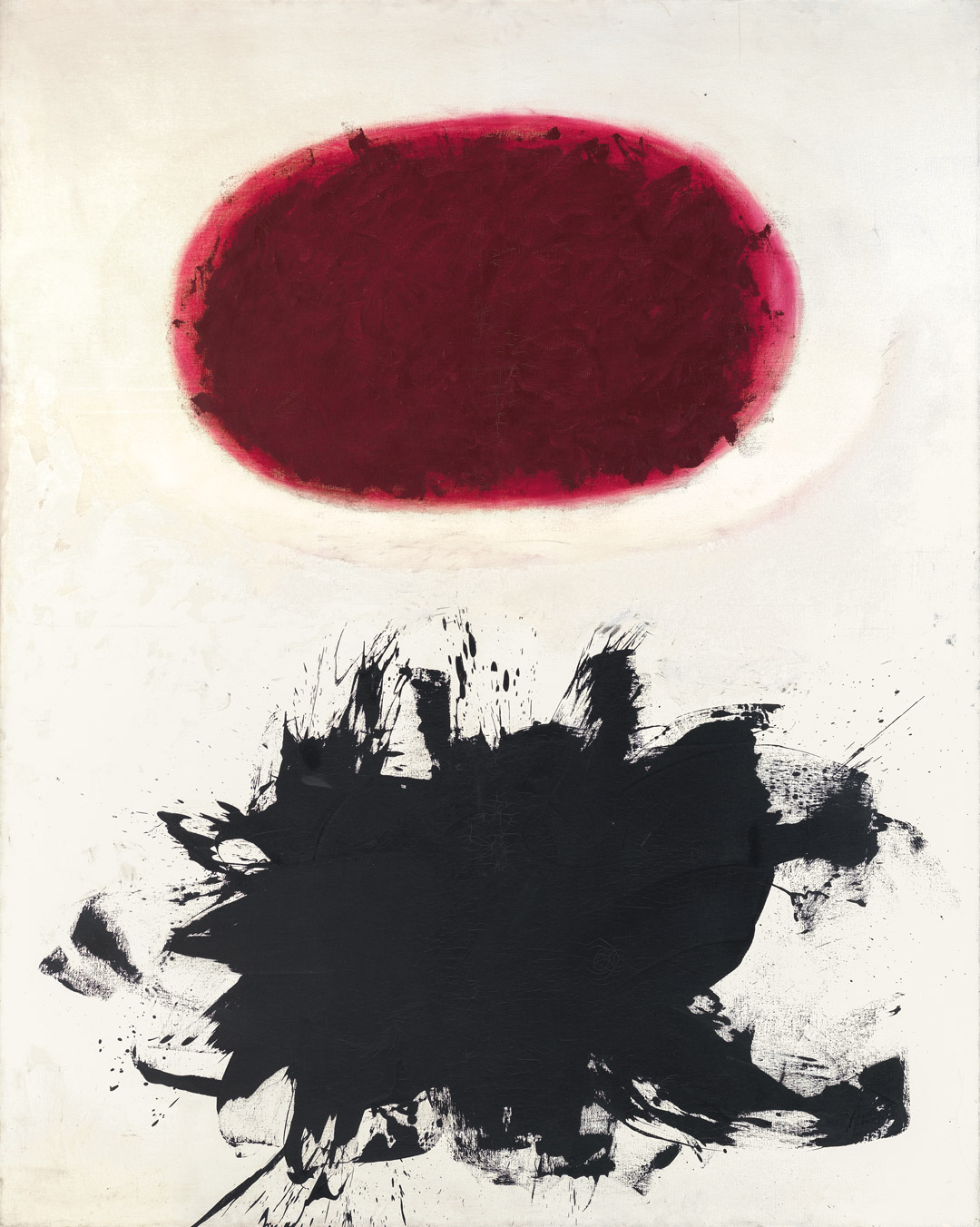
Adolph Gottlieb, Crimson Spinning #2, 1959
Acquired December 11, 1972
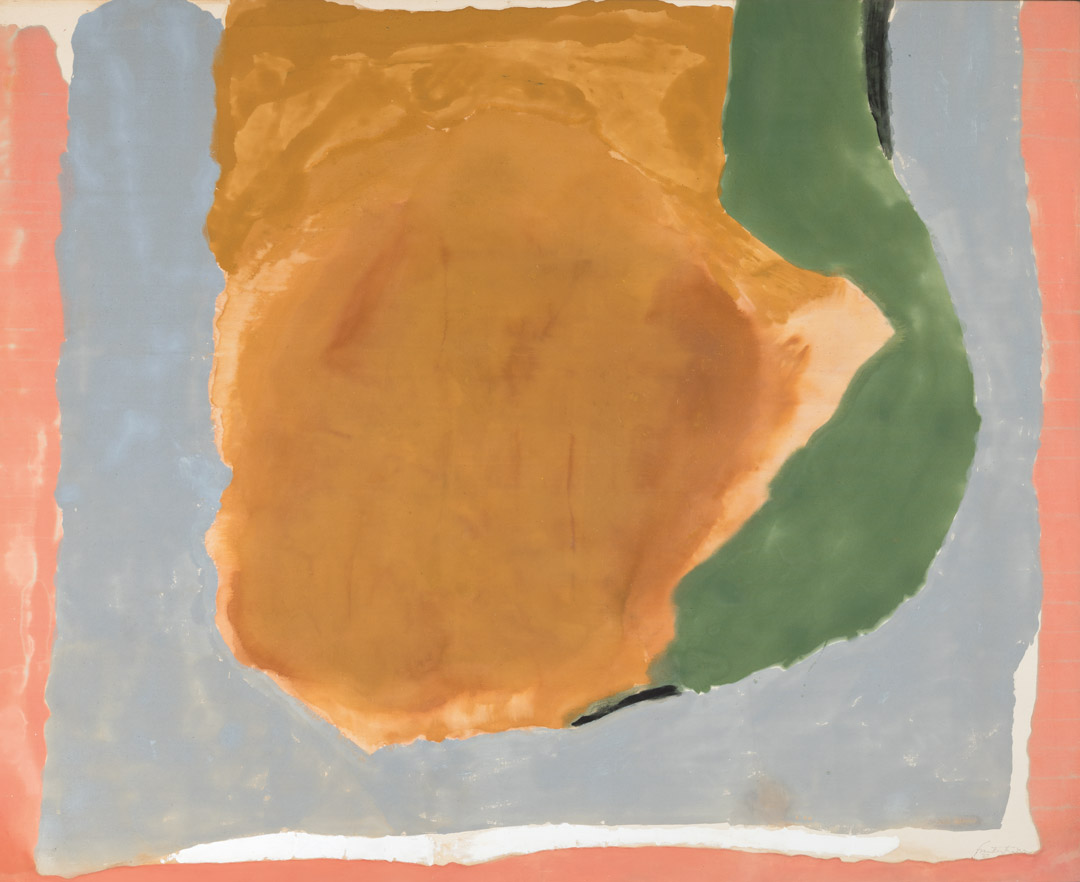
Helen Frankenthaler, Dawn Shapes, 1967
Acquired April 26, 1973
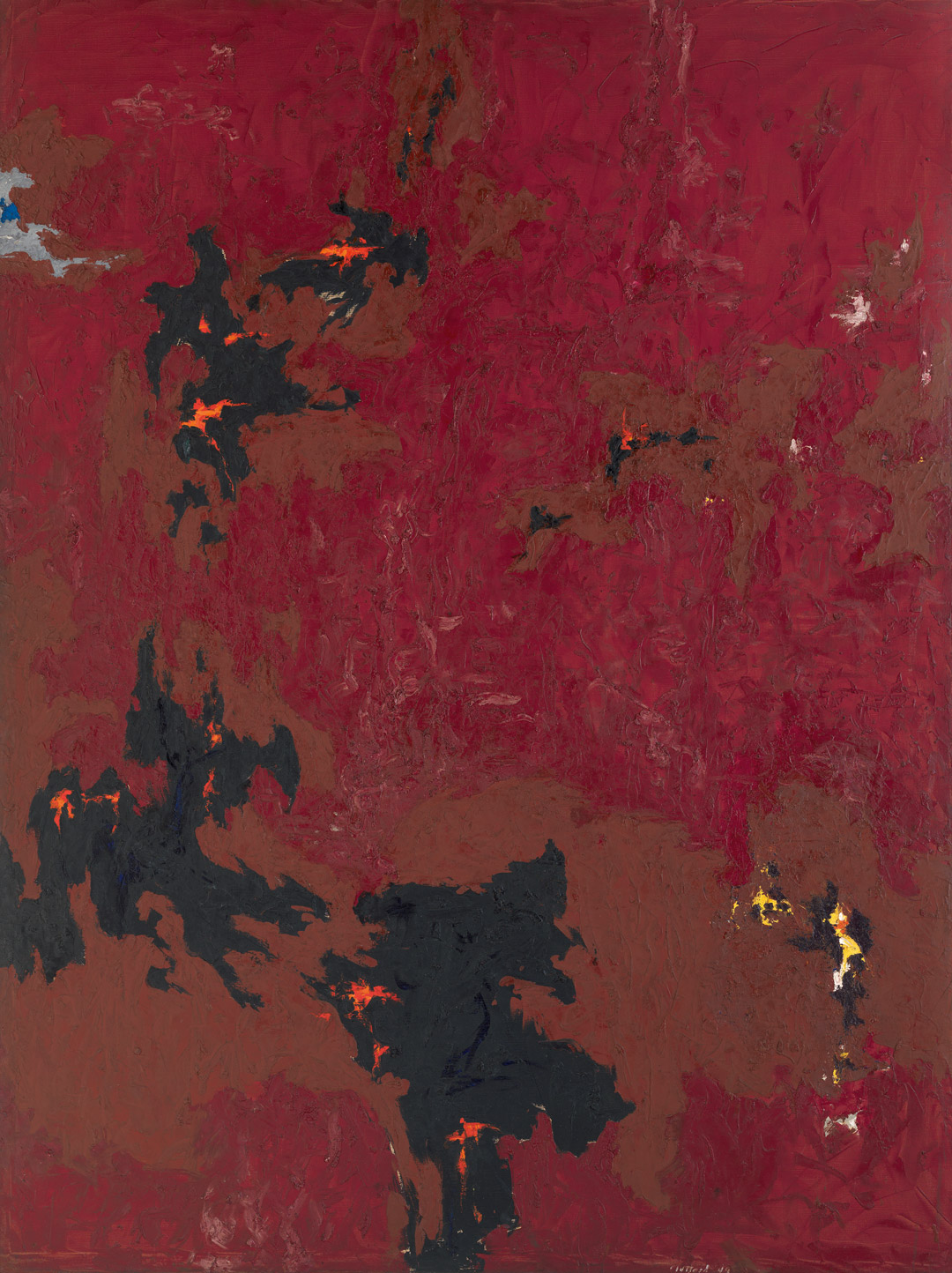
Clyfford Still, PH-338, 1949
Acquired November 10, 1973

Ad Reinhardt, Painting, 1950, 1950
Acquired January 8, 1974
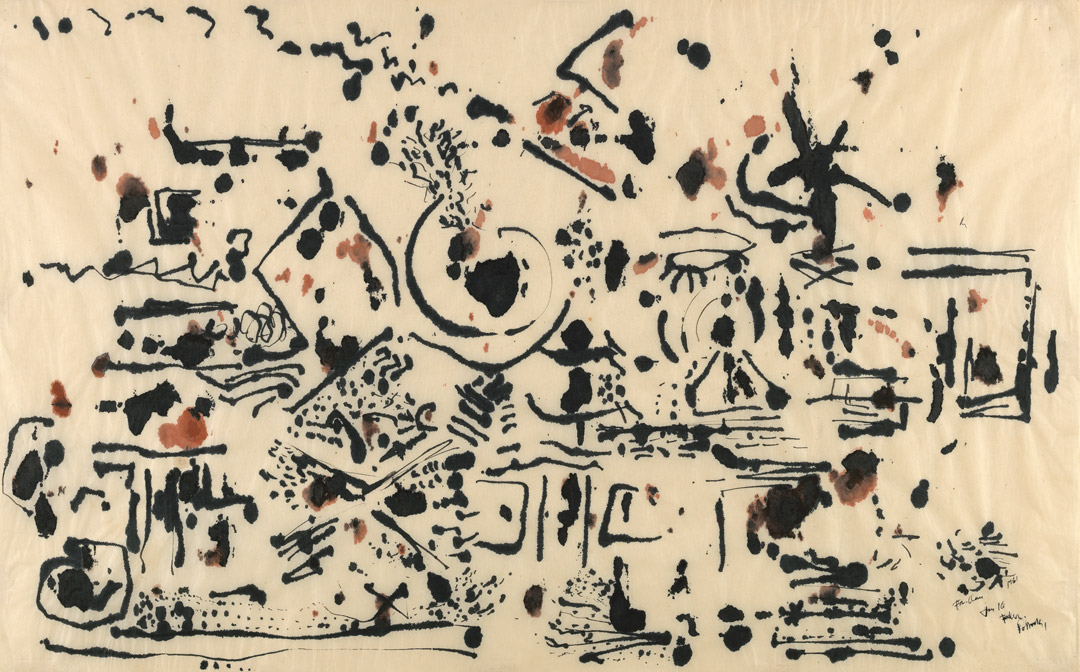
Jackson Pollock, Untitled, 1951
Acquired March 29, 1974
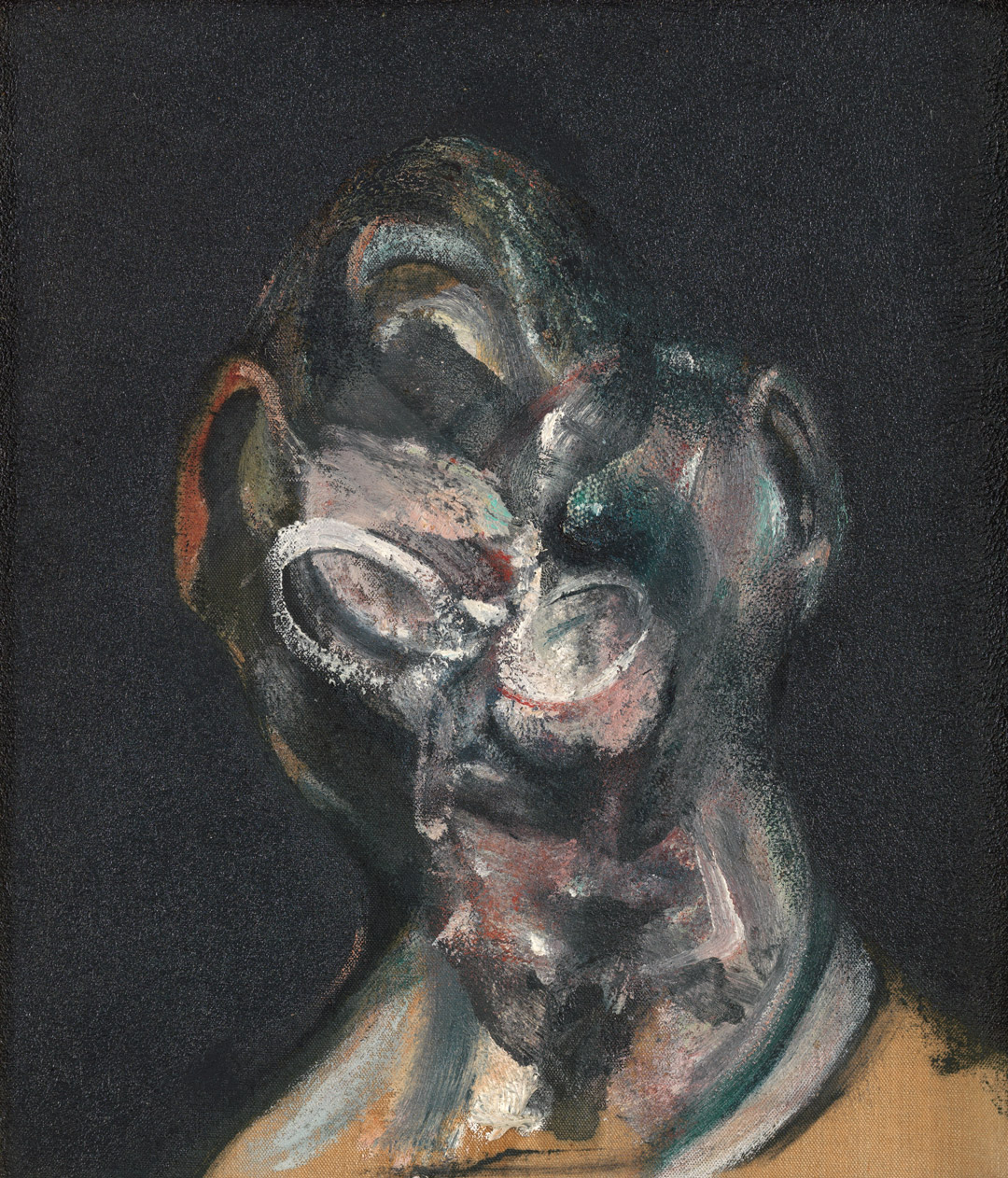
Francis Bacon, Portrait of Man with Glasses I, 1963
Acquired October 24, 1974
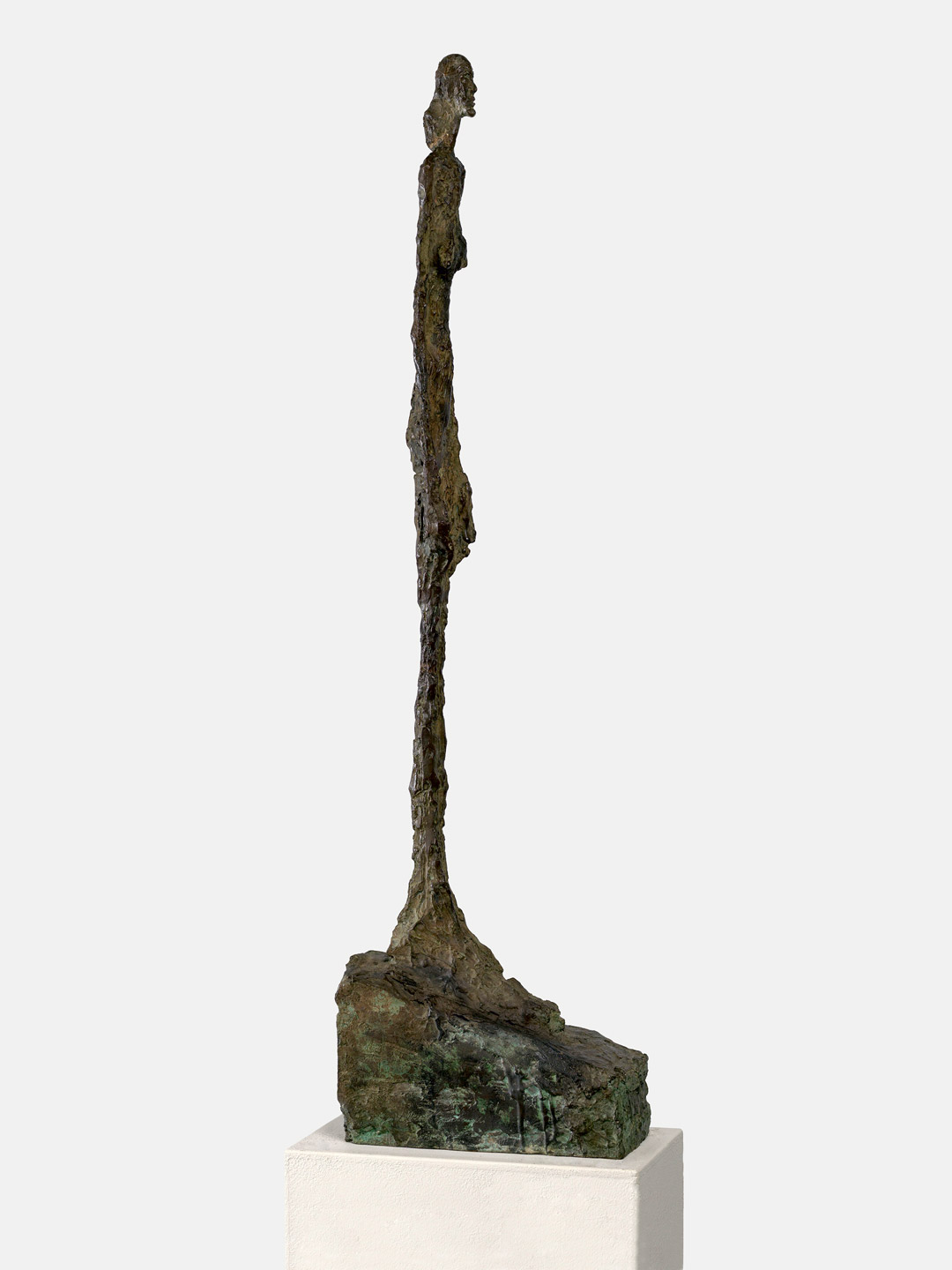
Alberto Giacometti, Femme de Venise II, 1956
Acquired January 2, 1975
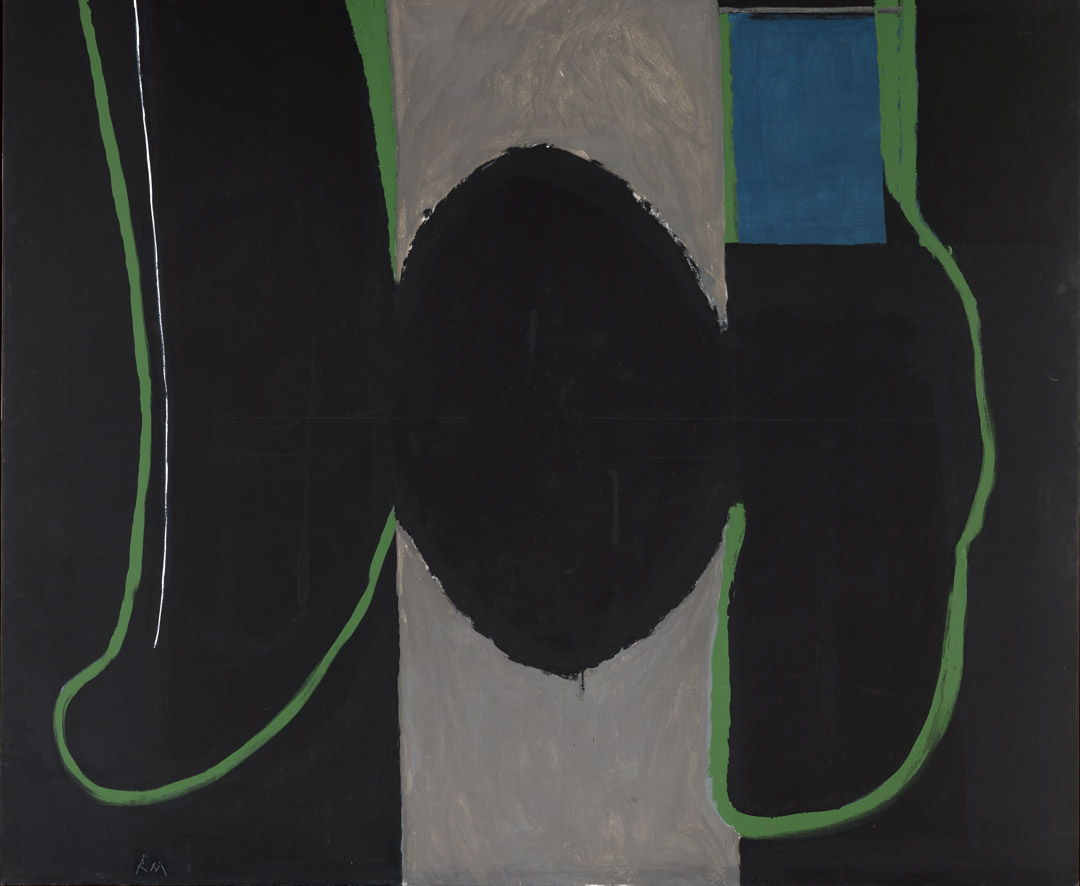
Robert Motherwell, Irish Elegy, 1965
Acquired November 7, 1975
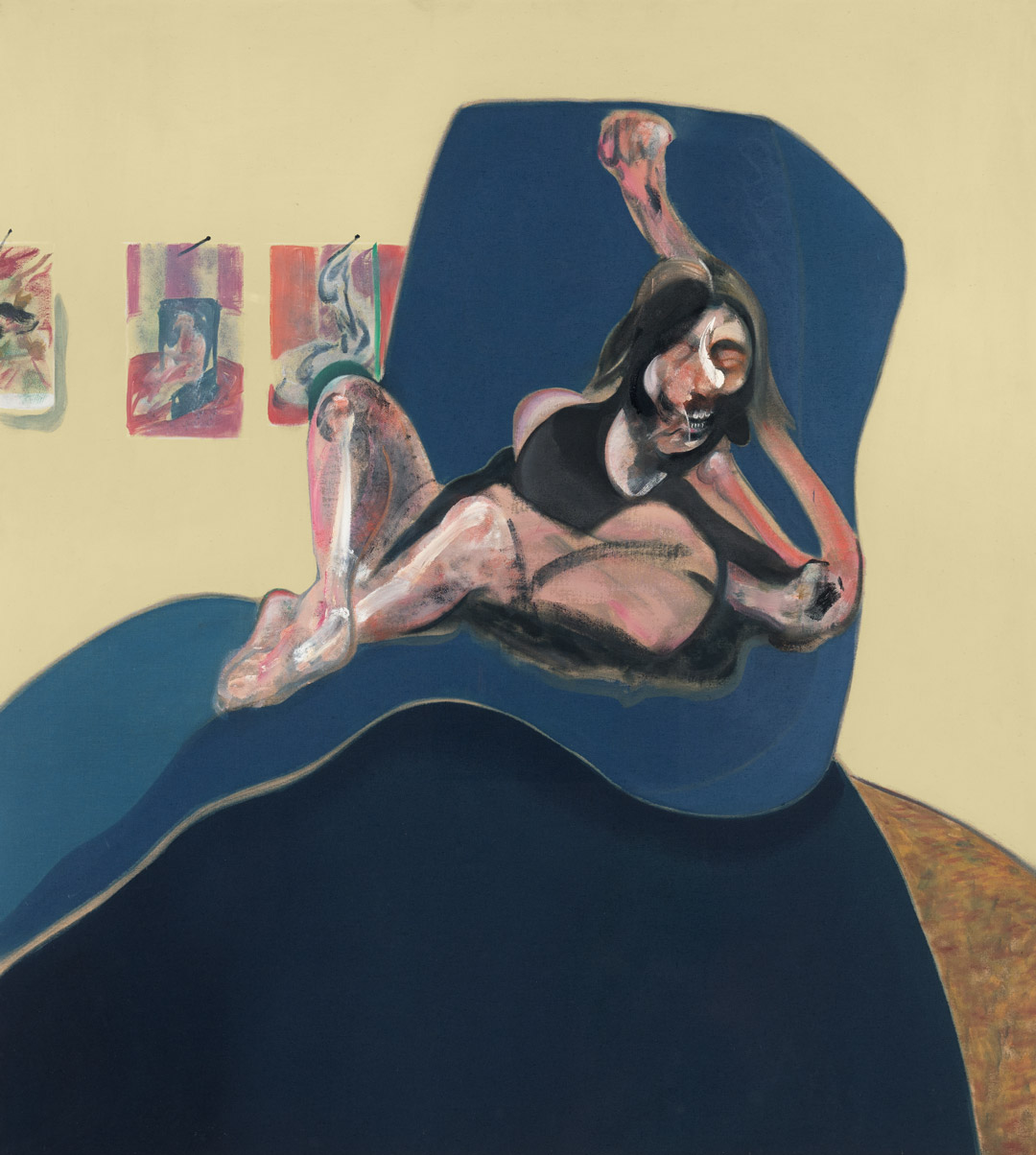
Francis Bacon, Study for a Portrait, 1967
Acquired November 20, 1976
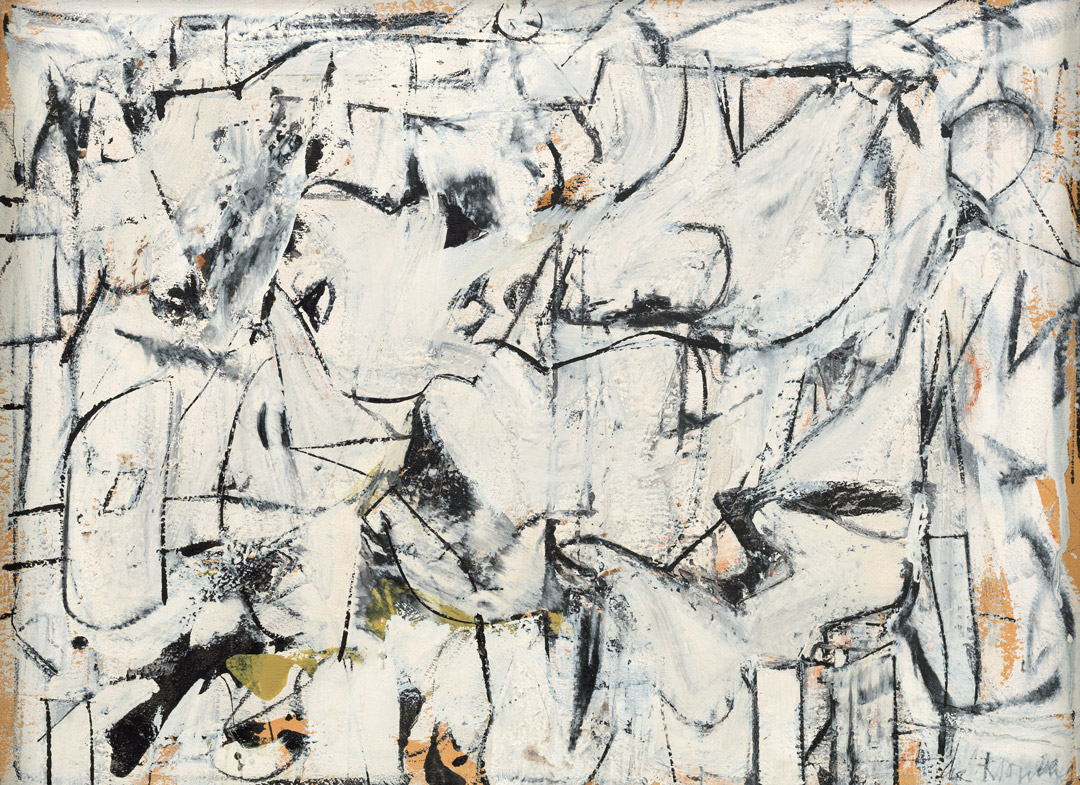
Willem de Kooning, Town Square, 1948
Acquired December 6, 1976
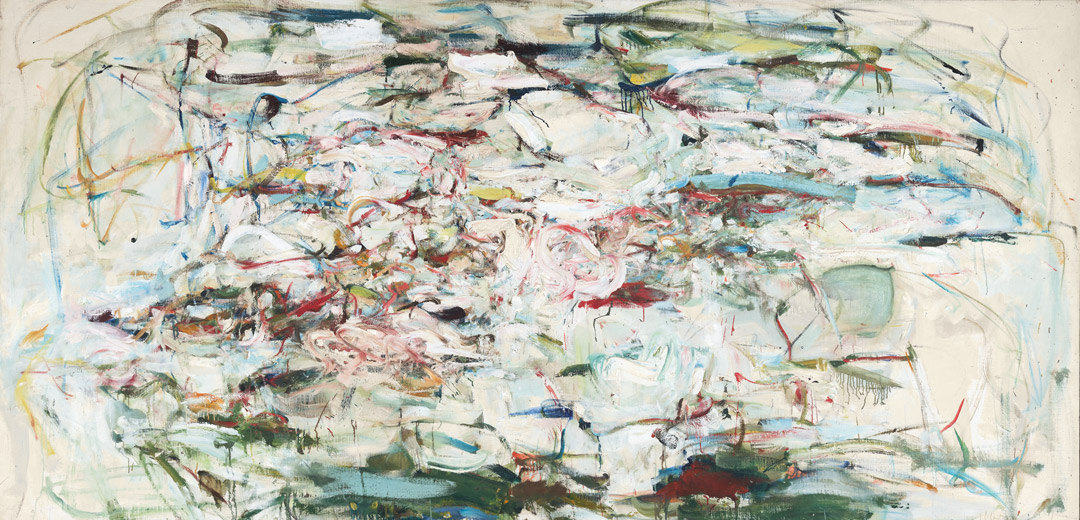
Joan Mitchell, The Sink, 1956
Acquired September 12, 1977

David Smith, Cubi XXV, 1965
Acquired February 22, 1978
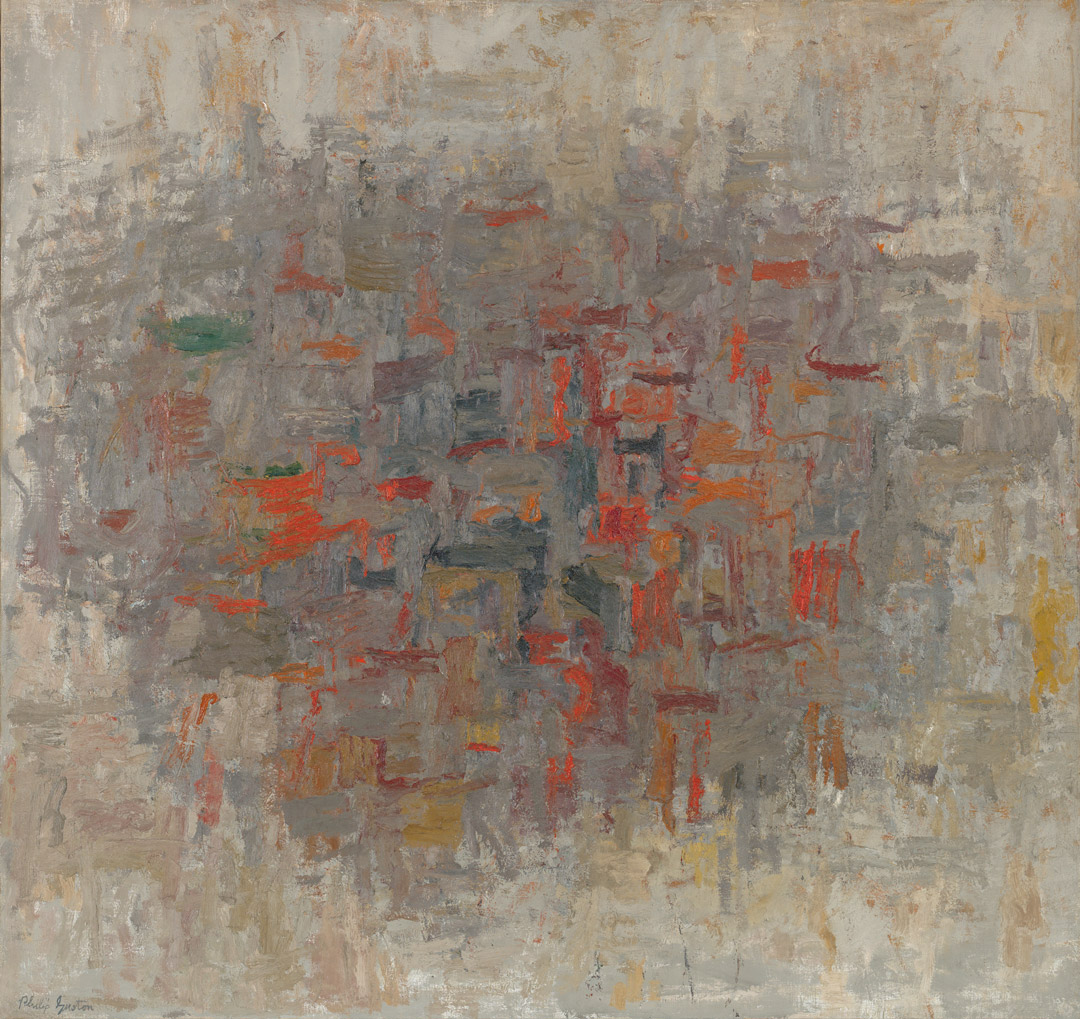
Philip Guston, To B.W.T., 1952
Acquired February 14, 1979
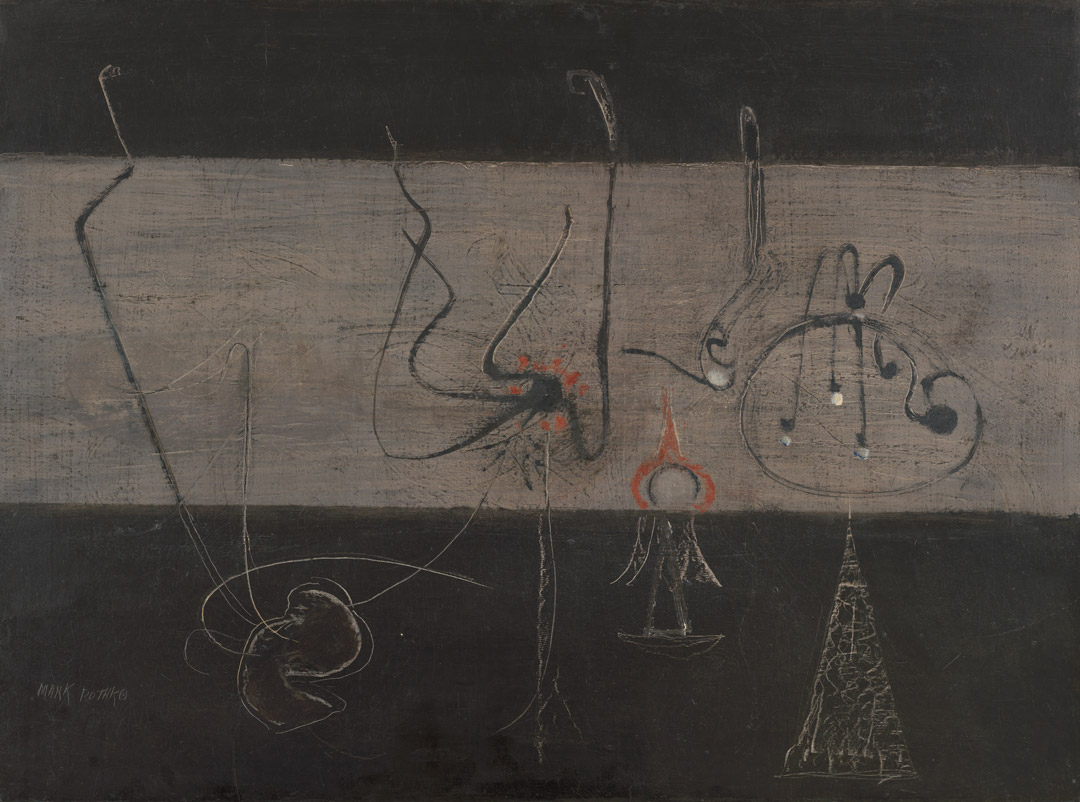
Mark Rothko, Untitled, ca.1945
Acquired November 12, 1980

Lee Krasner, Night Watch, 1960
Acquired November 19, 1981
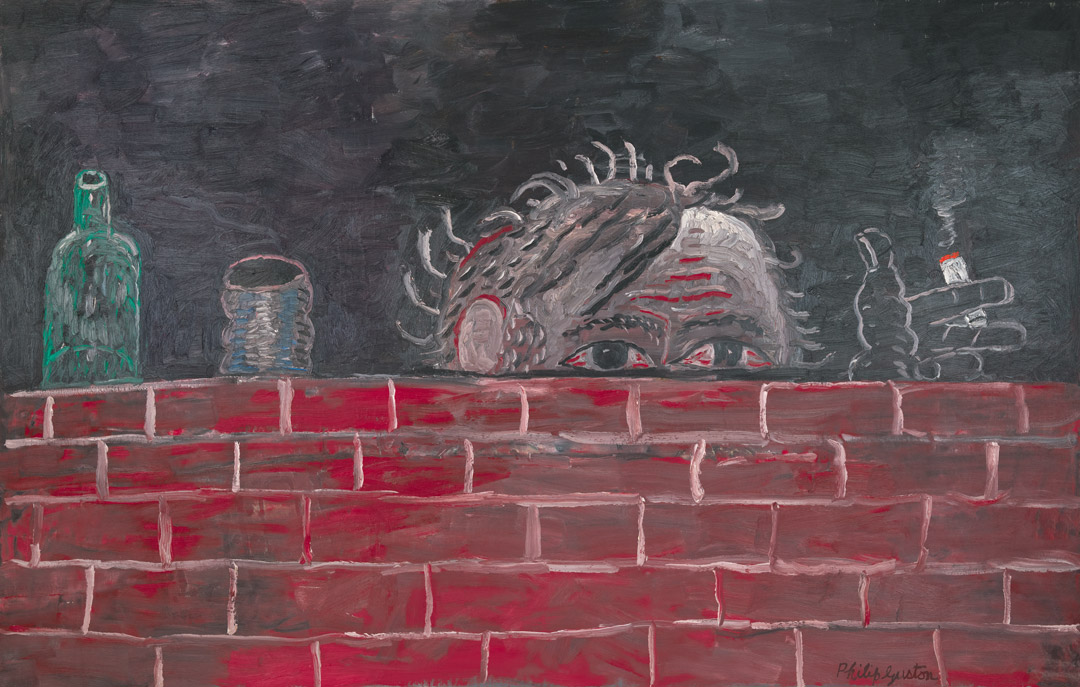
Philip Guston, The Painter, 1976
Acquired February 1, 1982

